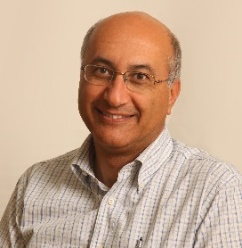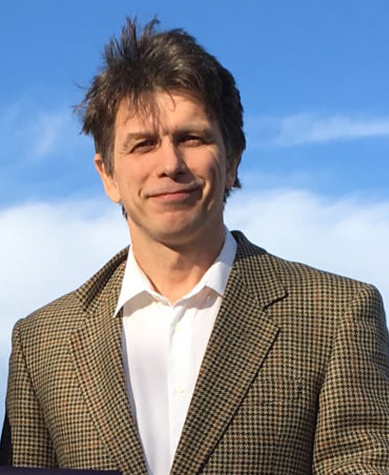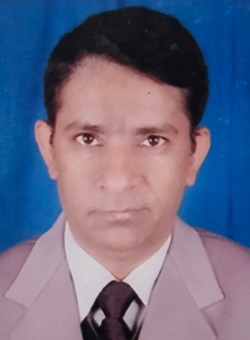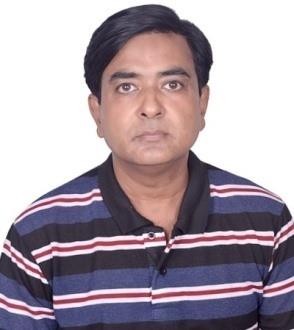Scientific Program
Keynote Session:
A PHP Error was encountered
Severity: 8192
Message: trim(): Passing null to parameter #1 ($string) of type string is deprecated
Filename: pastconference/past-program-schedule.php
Line Number: 239
Backtrace:
File: /efsdata/meetingsint-com/application/views/pastconference/past-program-schedule.php
Line: 239
Function: trim
File: /efsdata/meetingsint-com/application/controllers/Pastconference.php
Line: 128
Function: view
File: /efsdata/meetingsint-com/index.php
Line: 317
Function: require_once
Title: Additive manufacturing: the next industrial revolution
Biography:
Shlomo Magdassi is a professor at the Institute of Chemistry of The Hebrew University of Jerusalem. He is the Director of the Center for Functional and 3D Printing, and holds the Enrique Berman Chair in solar energy. His research focuses on micro and nanomaterials and their applications in functional inks such as printed electronics, 2D, 3D and 4D printing. He is the author over 300 publications and the editor of 4 books.He also has more than 80 inventions (38 US granted patents, ~300 PCT applications), which are related to applications of dispersed systems in various industries. Based on his inventions, many commercial activities evolved, which led to licensing, worldwide sales and establishing new start-up companies.
Abstract:
Additive manufacturing which is based on printing processes, is considered as the next industrial revolution. Functional printing brings additional performance of printed patterns, beyond the conventional graphic output, and the nmain bottleneck in this field is the lack of suitable materials. The synthesis and formulations of novel nanomaterials and inks will be presented, with their utilization in printed devices, responsive and 3D objects. New approaches for achieving conductive inks for printed plastic electronics will be presented, as well as new materials and processes for 3D and 4D printing. Utilization of 3D and 4D printing technologies for fabrication of objects composed of ceramics, shape memory polymers, elastomers and hydrogels will be demonstrated, for applications such as soft robotics, drug delivery systems, responsive connectors and Internet of Things (IoT), dynamic jewelry and medical devices.
A PHP Error was encountered
Severity: 8192
Message: trim(): Passing null to parameter #1 ($string) of type string is deprecated
Filename: pastconference/past-program-schedule.php
Line Number: 239
Backtrace:
File: /efsdata/meetingsint-com/application/views/pastconference/past-program-schedule.php
Line: 239
Function: trim
File: /efsdata/meetingsint-com/application/controllers/Pastconference.php
Line: 128
Function: view
File: /efsdata/meetingsint-com/index.php
Line: 317
Function: require_once
Title: Mesoporous Metal Sulfide and Metal Selenide Thin films
Biography:
Abstract:
Synthesis of the mesoporous CdS and CdSe by using of liquid crystalline templating (LCT) approach has been investigated. The thermal and structural behavior of the [Cd(H2O)4](NO3)2/surfactant (P85 = ((PEO)26(PPO)40(PEO)26)) binary lyotropic liquid crystalline (LLC) systems have been investigated towards synthesis of the mesoporous cadmium sulfide, CdS, or cadmium selenide (CdSe) directly from the mesostructured CdS (or CdSe) thin films. However, the mesostructured CdS/P85 films (at low salt concentrations), which were obtained by reacting [Cd(H2O)4](NO3)2/P85 LLC thin films under H2S atmosphere, are not stable to calcination process and always produced bulk CdO and CdS domains over the thin films. More metal ion containing [Cd(H2O)4](NO3)2-C12EO10-CTAB mesostructured films produced vast amount of HNO3 under the H2S atmosphere and caused decomposition of CdS back to their nitrates.
To overcome above problems, a polymerizing agent, such as titania or silica precursors have been added to salt/surfactant LLC mesophase. Both titania and silica overcame collapse of the mesophase by rigidifying the structure into mesostructured solid and also by providing stability for a thermal removal of nitrates from the media. For this investigation, both [Cd(H2O)4](NO3)2 and [Zn(H2O)6](NO3)2 salts and P123 ((PEO)20(PPO)70(PEO)20) and C12EO10-CTAB couple have been used. Well-ordered mesostructured Cd(II) titania films have been obtained up to 15.0 Cd(II)/P123 mole ratio for a 60 mole ratio of Ti(IV)/P123 by spin or dip coating of a mixture of 1-butanol-[Cd(H2O)4](NO3)2-P123-HNO3-Ti(OC4H9)4. Exposing the mesostructured Cd(II)-TiO2 films to H2Se under a N2 atmosphere gave stable CdSe nanoparticles in the channels of the mesostructured rigid titania walls up to 25 mole % Cd(II)/Ti(IV). To further increase the metal ion (Cd(II) and Zn(II)) content in the structure of the C12EO10-CTAB-salt mesophase have been employed. The two surfactant-salt systems, in the presence of a titania precursor, produced sponge like mesoporous CdTiO3 and Zn2TiO4 films up to a mole percent of 57 and 86, respectively, upon calcination. Exposing the mesoporous CdTiO3 to H2S or H2Se atmosphere at RT produced homogeneously distributed CdS or CdSe nanocrystallites on the nanocrystalline TiO2 pore walls, respectively. The reaction of mesoporous Zn2TiO4 with H2Se produced stable ZnSe nanocrystallites on the nanocrystalline TiO2 pore walls. The conversion of titania from CdTiO3 to an anatase and brookite phase under H2S and H2Se atmosphere, respectively, and from Zn2TiO4 to a rutile phase under H2Se were observed for the first time. Adding a silica precursor to the two surfactants (C12EO10-CTAB)-salt mesophase produced mesostructured salted-silica, and its calcination produced sponge-like mesoporous silica-metal oxide (dumped meso-SiO2-CdO and meso-SiO2-ZnO) thin films. Up to ~100 % and ~50 % surface coverage could be achieved by CdO and ZnO as nano-islands over the SiO2 pore walls. Exposing the mesoporous SiO2-CdO and SiO2-ZnO thin film precursors to H2S and H2Se at RT enabled the synthesis of mesoporous SiO2-CdS, SiO2-CdSe, SiO2-ZnS, and SiO2- ZnSe thin films. The MS or MSe nanoflakes could homogenously cover the pore walls of mesoporous silica by retaining the pore morphology of the MO precursors. Finally, the SiO2 walls were removed from the meso-SiO2-CdS and meso-SiO2-CdSe films through etching in a dilute HF solution to produce mesoporous CdS (meso-CdS) and mesoporous CdSe (meso-CdSe). Surface of the meso-CdS has been modified using PEI (polyethyleneimine) and photoluminescent meso-CdS were obtained.
A PHP Error was encountered
Severity: 8192
Message: trim(): Passing null to parameter #1 ($string) of type string is deprecated
Filename: pastconference/past-program-schedule.php
Line Number: 239
Backtrace:
File: /efsdata/meetingsint-com/application/views/pastconference/past-program-schedule.php
Line: 239
Function: trim
File: /efsdata/meetingsint-com/application/controllers/Pastconference.php
Line: 128
Function: view
File: /efsdata/meetingsint-com/index.php
Line: 317
Function: require_once
Title: Nanotechnology and cannabis
Biography:
Abstract:
A PHP Error was encountered
Severity: 8192
Message: trim(): Passing null to parameter #1 ($string) of type string is deprecated
Filename: pastconference/past-program-schedule.php
Line Number: 239
Backtrace:
File: /efsdata/meetingsint-com/application/views/pastconference/past-program-schedule.php
Line: 239
Function: trim
File: /efsdata/meetingsint-com/application/controllers/Pastconference.php
Line: 128
Function: view
File: /efsdata/meetingsint-com/index.php
Line: 317
Function: require_once
Title: Driving Molecular Transport across Biological Membranes from Magnetic Nanoparticle/Pulsed Magnetic Field
Biography:
Abstract:
Our research aim is to investigate how magnetic nanoparticles and magnetic field combinations can be used to open up pores on various membranes to facilitate transport of various sized molecules. The research will address the underlying fundamental challenges that limit the efficient use of various types of magnetic fields for creating a biological response such as cell death, change in function. In this research, cell, bacterial and liposomal model systems will be investigated when nanoparticles are integrated into their structure and exposed to various types of magnetic fields such as short homogeneous and inhomogeneous magnetic pulses, linearly and circularly polarized magnetic fields, or small amplitude AC magnetic fields. The transport properties will be evaluated using fluorescence techniques based on permeability essays, electrochemical essays detecting small trace molecules and based on exploring the biological response of the system such as cell viability. Addition characterization techniques will be necessary to accurately survey the structure of these systems prior and post exposure to the magnetic fields. In this research, we will implement spectroscopic and microscopic techniques to explore spatial and dynamical aspects of the magnetic fields on proposed systems. Integration of fluorescence microscopy with electromagnet will allow studying the systems under the I influence of the magnetic fields. Spectroscopic method based on magnetic field transient Faraday rotation of the magnetic particles and dynamical measurements of ultrasonic intensities will explore the transfer of the magnetic field’s energy into mechanical movement in the medium.
A PHP Error was encountered
Severity: 8192
Message: trim(): Passing null to parameter #1 ($string) of type string is deprecated
Filename: pastconference/past-program-schedule.php
Line Number: 239
Backtrace:
File: /efsdata/meetingsint-com/application/views/pastconference/past-program-schedule.php
Line: 239
Function: trim
File: /efsdata/meetingsint-com/application/controllers/Pastconference.php
Line: 128
Function: view
File: /efsdata/meetingsint-com/index.php
Line: 317
Function: require_once
Title: Potential of production of carbon nanotubes from olive oil in Middle East and Gulf Region
Biography:
Abstract:
The cost of the production of carbon nanotubes (CNTs) is one of the great challenges. The pyrolysis is a simple and economic technique for synthesizing CNTs at low temperatures. Fabrication and characterization of CNTs using pyrolysis process and from environmentally green source (olive oil). The precursors, the catalyst, and the carrier gas affect the cost of production. The production of olive oil in Egypt, Middle East and gulf region dedicated them as a great production area for CNTs. olive oil is used as precursors and compared with nickel chloride (5 wt. %) as a catalyst and argon as a carrier gas. Si wafer has been used as a substrate and operated at 900 °C. The CNTs were characterized by FESEM (Field emission scanning electron microscope), HR-TEM (High Resolution Transmission Electron Microscopy), X-ray photoelectron spectroscopy (XPS), and Raman spectroscopy. The results reveal that as-grown nanotubes are well graphitized with olive. CNTs were prepared by catalytic decomposition of the oil over the metal particles dispersed and supported on the substrate by pyrolysis method. The results illustrated that the different densities of the oils and ratios of saturated hydrocarbons in olive oil caused the production of different carbon products.
A PHP Error was encountered
Severity: 8192
Message: trim(): Passing null to parameter #1 ($string) of type string is deprecated
Filename: pastconference/past-program-schedule.php
Line Number: 239
Backtrace:
File: /efsdata/meetingsint-com/application/views/pastconference/past-program-schedule.php
Line: 239
Function: trim
File: /efsdata/meetingsint-com/application/controllers/Pastconference.php
Line: 128
Function: view
File: /efsdata/meetingsint-com/index.php
Line: 317
Function: require_once
Title: Potential of production of carbon nanotubes from olive oil in Middle East and Gulf Region
Biography:
Abstract:
Abstract
Supercritical fluids (SCFs) are the transient states of matter produced through operating the fluids above their critical point. SCF are inexpensive, non toxic, non flammable media with pressure tunable density, viscosity, diffusivity and surface tension. Density, viscosity and diffusivity are the common physical characteristics of SCFs that they share with liquids (Fig.1). High penetrating power of SCFs is due to their 102 to 103 times greater densities over liquids, 10 to 102 times reduced viscosities over gases and high rate of diffusion @ 10-3 to 10-4 cm2/s times over liquids. Such unique combinations of physical behavior SCFs are effused across solids leading to swelling or solubilzation 1. Among SCF, the most investigated are supercritical carbon dioxide (SCC) and supercritical water (SCW) [2-4]. Judicious variations in temperature and pressure equalizes the densities of liquid and gas phases, restricting phase transitions in SCFs regardless to applied pressure .Applications of SCFs as an alternative media in food processing , chromatography, energy production and drug development was recognized till beginning of 19th century, has now well accepted in processing of materials 6-13.SCFs offers a series of unique methods of particle sizing, development of polymer composites, blends, dispersion of layered silicate, inorganic4, graphitic and magnetic fillers into solvents, monomers and their infusion into polymer matrix at ambient temperatures. Polymer functionalized nanostructurd polyelectrolytes for photovoltaic and energy storage applications are successfully synthesized under supercritically controlled conditions. Highly sensitive functional nanomaterials for antibacterial applications sensor and target delivery of drugs are conveniently synthesized in SCC7-13.The present talk, shall deliver the salient features of SCFs and their applications in particle fabrication, polymerization, preparation of nanocomposites, nanohybrids, nanomaterials for wood preservation, nanocomposites for development of durable composite structures, electroactive nanomaterials for sensing, energy storage, target delivery systems and nanoparticle mediated microbial degradation of commodity plastic materials. Concluding remarks will be presented on simplicity, diversity, and commercial viability of SCFs processing of polymer nanomaterials.
Title: Design, synthesis, and characterization of carbon-based nanocomposites with conducting polymers /metal oxides and their application
Biography:
Abstract:
A PHP Error was encountered
Severity: 8192
Message: trim(): Passing null to parameter #1 ($string) of type string is deprecated
Filename: pastconference/past-program-schedule.php
Line Number: 239
Backtrace:
File: /efsdata/meetingsint-com/application/views/pastconference/past-program-schedule.php
Line: 239
Function: trim
File: /efsdata/meetingsint-com/application/controllers/Pastconference.php
Line: 128
Function: view
File: /efsdata/meetingsint-com/index.php
Line: 317
Function: require_once
Title: : Lignocellulose Application as Sustainable High-value materials
Biography:
Abstract:
The challenge in biomass conversion is that the products produced are of low quality and therefore of low value and only utilizable in commodity areas like energy (i.e. replacing coal) and/or at best in transportation fuels (i.e. ethanol). In this paper a new low-cost technology is presented which is capable to fractionate the valuable constituents of biomass, being polymeric Cellulose and polyaromatic Lignin, without destroying or damaging these components. This is very unique and up to now has only been possible making use of enzymes or of high cost organic ionic liquid technology. The Nano cellulose and Lignin produced are suitable candidates and/or precursors to produce high performance fibers like super nanocellulosic fibers and Carbon-fibers. Materials and Methods Based on the unique ionic-liquid like” properties of ZnCl2 solvents a novel cost-effective technology has been developed to convert cellulosic wastes into high quality materials such as tailored micro and Nano cellulosic materials. The original intention of this technology was to convert cellulosic wastes into sugars which could serve as base materials for the production of renewable fuels. During the development of such a route it was found that the cellulose produced from raw materials was quite unique and exhibited special properties and based on this insight the technology was adapted with the aim of producing valuable bio-based materials. The advantages of this technology versus alternative routes as for instance the conversion of cellulose by enzymes, acids, organic ionic liquids and/or in combination with high energy mechanical milling are discussed. Biomass conversion with acids is fast but produces a lot of degraded side products. The use of ionic liquids and/or enzymes is expensive and slow (10-40 hours). With this improved ZnCl2 hydrate technology the opportunity arises to economically produce various high value products such as: • Micro and Nano-Cellulose applied as bio-coatings & materials. • Cellulose oligomers in food applications (non-digestible fibers). • Lignin and Nano-Cellulose as construction materials (High Tech Wood) • Lignin for Bio-Aromatics (precursors for Surfactants and Carbon Fibers) • Lignin as bio-component in polymeric materials. The Nano cellulose and Lignin produced are suitable candidates and/or precursors to produce high performance fibers like super nano-cellulosic fibers and Carbon-fibers. The economic value of these materials is at least 5-10 x higher than the commodities produced with other biomass conversion technologies.Based on these characteristics it is possible to establish a very attractive business case for the utilization of biomass and biomass waste components as high value materials.
A PHP Error was encountered
Severity: 8192
Message: trim(): Passing null to parameter #1 ($string) of type string is deprecated
Filename: pastconference/past-program-schedule.php
Line Number: 239
Backtrace:
File: /efsdata/meetingsint-com/application/views/pastconference/past-program-schedule.php
Line: 239
Function: trim
File: /efsdata/meetingsint-com/application/controllers/Pastconference.php
Line: 128
Function: view
File: /efsdata/meetingsint-com/index.php
Line: 317
Function: require_once
Title: Tissue engineering and three-dimensional printing in periodontal regeneration: a literature review
Biography:
Abstract:
Keynote Session:
A PHP Error was encountered
Severity: 8192
Message: trim(): Passing null to parameter #1 ($string) of type string is deprecated
Filename: pastconference/past-program-schedule.php
Line Number: 239
Backtrace:
File: /efsdata/meetingsint-com/application/views/pastconference/past-program-schedule.php
Line: 239
Function: trim
File: /efsdata/meetingsint-com/application/controllers/Pastconference.php
Line: 128
Function: view
File: /efsdata/meetingsint-com/index.php
Line: 317
Function: require_once
Title: Modified Activation Process for Supercapacitor Electrode Materials from African Maize Cob
Biography:
Abstract:
bstractIn this work, African maize cobs (AMC) were used as a rich biomass precursor to synthesize carbon materialthrough a chemical activation process for application in electrochemical energy storage devices. The carbonization and activation were carried out with concentrated Sulphuric acid at three different temperatures of 600, 700 and 800 °C, respectively. The activated carbon exhibited excellent microporous and mesoporous structure with a specific surface area that ranges between 30 and 254 m2·g−1as measured by BET analysis. The morphology and structure of the produced materials are analyzed through Field Emission Scanning Electron Microscopy (FESEM), Fourier Transform Infrared Spectroscopy (FTIR), X-Ray Diffraction (XRD), Boehm titration, X-ray Photoelectron Spectroscopy (XPS) and Raman Spectroscopy. X-ray photoelectron spectroscopy indicates that a considerable amount of oxygen is present in the materials. The functional groups in the activated carbon enhanced the electrochemical performance and improved the material’s double-layer capacitance. The carbonized composite activated at 700 °C exhibited excellent capacitance of 456 F g−1at a specific current of 0.25 A g−1in 6 M KOH electrolyte and showed excellent stability after 10,000 cycles. Besides being a low cost, the produced materials offer good stability and electrochemical properties, making them suitablefor supercapacitor applications.
A PHP Error was encountered
Severity: 8192
Message: trim(): Passing null to parameter #1 ($string) of type string is deprecated
Filename: pastconference/past-program-schedule.php
Line Number: 239
Backtrace:
File: /efsdata/meetingsint-com/application/views/pastconference/past-program-schedule.php
Line: 239
Function: trim
File: /efsdata/meetingsint-com/application/controllers/Pastconference.php
Line: 128
Function: view
File: /efsdata/meetingsint-com/index.php
Line: 317
Function: require_once
Title: In Vitro Micro-Physiological Models for Pharmacokinetics and Disease Modelling
Biography:
Qasem Ramadan received his Ph.D. from NanyangTechnological University (Singapore) in 2006; afterward, he joined the Agency for Science, Technology, and Research (A-STAR) as a senior research scientist. In October 2008, he joined the Swiss Federal Institute of Technology in Lausanne (EPFL), where he worked in developing miniaturized in vitro models of the human gastrointestinal tract to investigate the health-promoting properties of dairy products emphasizing immune-metabolic profiling. In June 2013, he rejoined the A-STAR as a senior research scientist focusing on developing organ-on-a-chip engineering systems. In July 2019, he joined Alfaisal University in Saudi Arabia as an assistant professor of research. His current research focus is centered around developing modular organ-on-a-chip and body-on-a-chip systems for drug discovery and disease modeling.
Abstract:
Organ-on-a-chip (OOC) is an ambitious emerging technology with a great potential to enable in-depth studies of disease pathogenesis and therapy, hence opening new avenues for drug discovery, toxicology, and personalized medicine and offer a reliable alternative to animal models. In vivo, the organ(s) function is orchestrated by complex cellular structure and physiochemical factors within the Extracellular Matrix and secreted by various cells. Microfabrication and microfluidics technologies provide tools to create advanced cell culture systems, which can be employed to create in vivo-like cellular microenvironments and recapitulate specific tissue structure and physiological parameters. Here we will describe a compartmentalized microfluidic system for OOC that enables co-culturing of several cell types in close proximity with enhanced cell-cell interaction. We will then discuss three immune-competent micro-physiological models, namely the human gastrointestinal tract, the human epidermis, and the adipose tissue, the interaction of immune cells with these tissues, and their role in inflammation. We will emphasize the interaction between the adipocytes and immune cells to highlight the role of immune cell infiltration in the adipose tissue in the pathogenesis of diabetes type 2.
A PHP Error was encountered
Severity: 8192
Message: trim(): Passing null to parameter #1 ($string) of type string is deprecated
Filename: pastconference/past-program-schedule.php
Line Number: 239
Backtrace:
File: /efsdata/meetingsint-com/application/views/pastconference/past-program-schedule.php
Line: 239
Function: trim
File: /efsdata/meetingsint-com/application/controllers/Pastconference.php
Line: 128
Function: view
File: /efsdata/meetingsint-com/index.php
Line: 317
Function: require_once
Title: An XPS and DFT study of the interaction of a model polymer with silicon surfaces
Biography:
Abstract:
Understanding the interactions between polymers and surfaces is very important for the development of new, more effective materials such as glues and coating agents. The aim of this paper is to study the adsorption of polystyrene on model silicon surfaces and determine the extent to which the surface functionalisation influences the styrene adsorption. Different surface-modified silicon wafers were spin coated with layers of polystyrene. The functionalised surfaces studied included samples with terminating amine, methyl, thiol and hydroxyl groups with a hydrogen terminated silicon surface on which no hydrogen bonding could occur used as a control sample.
X-ray photoelectron spectroscopy (XPS) of the C1s shake-up satellites, which arise from π-π* transition of the aromatic ring of the polymer, was used to provide information on the nature of the interactions between the polymer and the functionalised silicon surfaces, with DFT modelling performed to establish a realistic model of the electronic structure of the adsorbed polystyrene’s MO energies.
A PHP Error was encountered
Severity: 8192
Message: trim(): Passing null to parameter #1 ($string) of type string is deprecated
Filename: pastconference/past-program-schedule.php
Line Number: 239
Backtrace:
File: /efsdata/meetingsint-com/application/views/pastconference/past-program-schedule.php
Line: 239
Function: trim
File: /efsdata/meetingsint-com/application/controllers/Pastconference.php
Line: 128
Function: view
File: /efsdata/meetingsint-com/index.php
Line: 317
Function: require_once
Title: Molecular Dynamics Simulation Insight into Water Condensation as a Function of Surface Hydrophobicity
Biography:
Abstract:
Water condensation plays a major role in a wide range of industrial applications. Over the past few years, many studies haveshown interest in designing surfaces with enhanced water condensation and removal properties; lotus leaf-like super-hydrophobic surfaces (SHS) and hydrophilic directional slippery rough surfaces (SRS) are some of the examples. To advance these designs a molecular scale understanding of the water behavior as a function of surface hydrophobicity is strongly needed. Since the approaches to quantify wetting at the macroscale do not always translate to the nanoscale, there is a need for new methods to characterize hydrophobicity at small scale. Using molecular dynamics computer simulations of well-characterized alkanethiol self-assembled monolayers with different head group chemistries, here we quantify the role of surface hydrophobicity on water condensation. We measured the water condensation rates on different surfaces and linked that behavior to well established surface characteristics to give a more complete picture of the role of surface hydrophobicity on the behavior of water. We showed that using our techniques, even small changes in the surface hydrophobicity are readily apparent. We also observed a remarkable correlation between our results and the role of surface hydrophobicity on the water compressibility, interfacial thermal conductance and contact angle when we compare data across different studies. Examining the total interaction energy between water and the surface, density fluctuations near the surface, the formation, growth mechanism and stability of water clusters, and the wetting process on thesurface we are able to provide insight into the water condensation process on different surfaces as a function of surface hydrophobicity.














